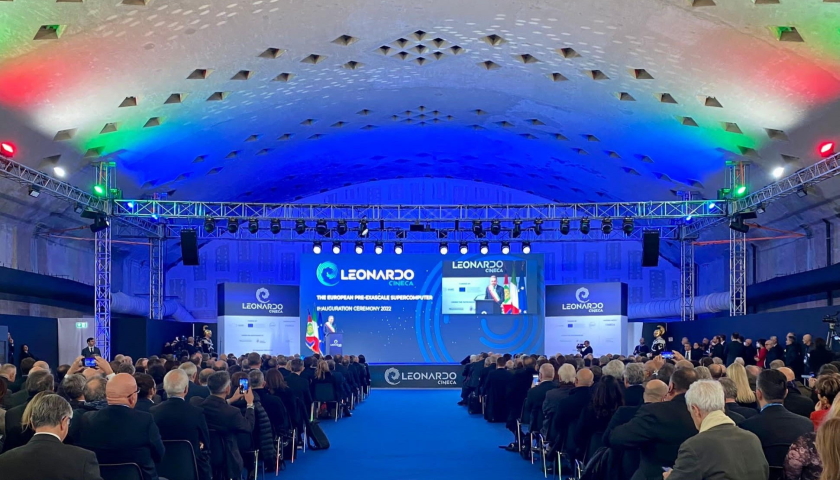The Italian supercomputer Leonardo is to receive a major performance upgrade.
An Atos BullSequana XH2000 system with Xeon Platinum processors and Nvidia A100 GPU accelerators, the system currently offers a sustained Linpack performance of 174.7 petaflops and peak performance of 255.75 petaflops.
First announced in 2020 and inaugurated in November 2022, the €120 million ($124.5m) system is currently the fourth most powerful on the most recent Top500 list
CINECA, the consortium operating the supercomputer, said last month that the EuroHPC Joint Undertaking (EuroHPC JU) recently approved CINECA’s expression of interest in upgrading the Leonardo supercomputer, with the aim of increasing its computing capacity by 100 petaflops.
The upgrade, known as Leonardo Improved Supercomputing Architecture (LISA), will utilize Leonardo’s modular architecture and aims to add two more computing modules.
CINECA said one module will be based on conventional high-bandwidth memory nodes, the other will be a brand new high-end accelerated module, capable of delivering top-of-the-line efficiency in terms of performance.
Based in Bologna, CINECA also operates the Marconi cluster – a mixture of Lenovo with an IBM accelerator module – which replaced the predecessor Fermi system in July 2016, as well as an Intel-powered IBM/Lenovo system known as Galileo from 2015. It also operates an Nvidia DGX system and an HPC cloud service.
The Leonardo system is partly funded through the EuroHPC JU. The HPE-Cray-based Lumi, located in Finland, is the most powerful EuroHPC JU system currently online, offering 309.10 petaflops sustained. Even after the 100 petaflops upgrade, Leonardo would remain in fourth place behind LUMI on the Top500 list.
EuroHPC expands exascale ambitions
In other European supercomputing news from the EuroHPC JU, the Jülich Supercomputing Centre (JSC) in Germany has signed an official hosting agreement to host the first European exascale supercomputer.
Originally announced in June 2022, six months after the JU began requesting hosts, the Jupiter system will be installed later in 2023. The project is projected to cost around €500 million ($530m), with half of the cost being covered by the EuroHPC JU.
The hosting agreement defines the roles, rights, and obligations of each party. The procurement process for this new supercomputer will be managed by EuroHPC JU and will begin in the immediate future.
As well as confirming the JSC for the first European exascale system, the EuroHPC JU has put out a call requesting a host for the second exascale supercomputer in Europe.
The JU has put out a request for expressions of interest to host a high-end supercomputer achieving ‘at least exascale levels of performance’.
The machine will be co-funded by the EuroHPC JU with a budget stemming from the Digital Europe Programme (DEP) alongside contributions from relevant participating states. The JU will co-fund up to 50 percent of the total cost up to €300 million ($318m).
The system would be expected to have a power system in the range of 20-25MW, and require at least 700 sqm (7,500 sq ft).
Applications must be submitted by 15 February 2023.
Read more: datacenterdynamics.com





